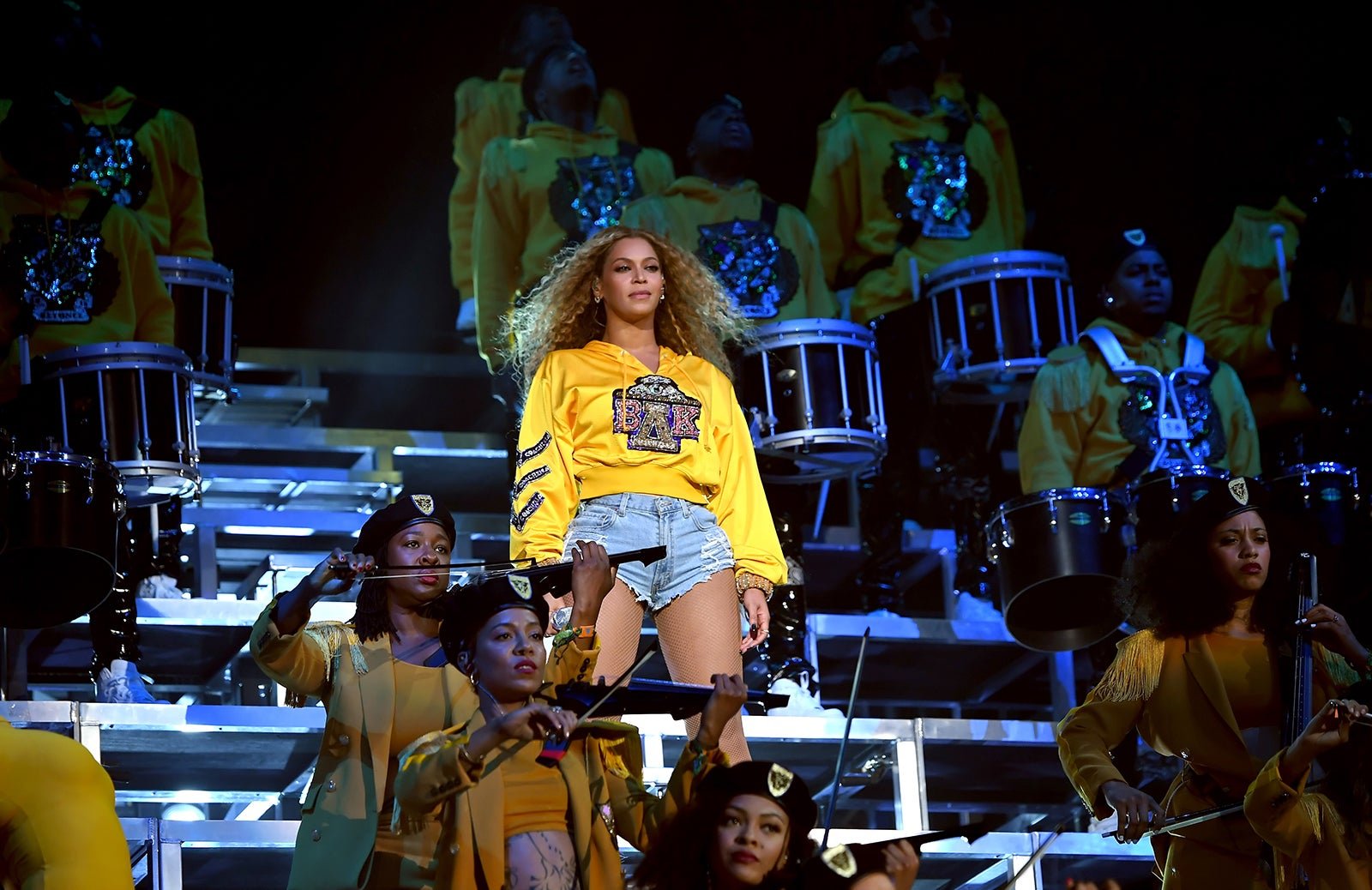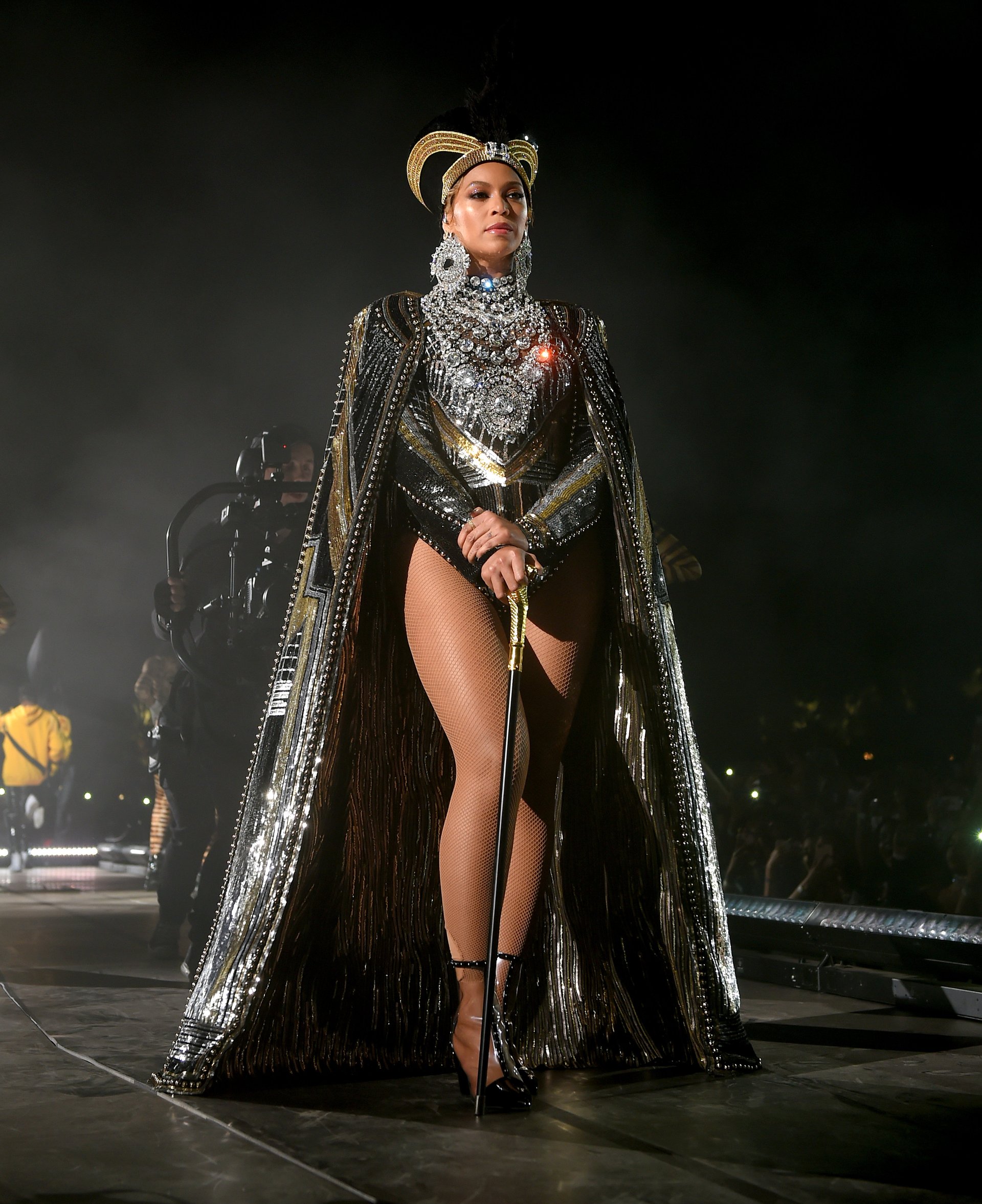The messages in Beyoncé’s Coachella show that black Americans heard loud and clear
Beyoncé’s Coachella performance was called ”a gobsmacking marvel of choreography and musical direction” by the New York Times, and “a spectacle for the ages” by Vulture. To many black Americans, however, her stunning set resonated on a different level: The performance was a two-hour tribute to historically black colleges (HBCUs), black Greek life, and a proud history of black educational excellence.


Beyoncé’s Coachella performance was called ”a gobsmacking marvel of choreography and musical direction” by the New York Times, and “a spectacle for the ages” by Vulture. To many black Americans, however, her stunning set resonated on a different level: The performance was a two-hour tribute to historically black colleges (HBCUs), black Greek life, and a proud history of black educational excellence.
It came at a time when HBCUs are embattled. Headlines about them detail scandals, low graduation rates, and a lack of funding. But instead of focusing on these problems, Beyonce delivered a love letter to these black institutions of scholarship. After her performance she donated $100,000 total to four historically black colleges, as part of her BeyGOOD initiative.

From the moment Beyoncé walked onto the stage at Coachella, with a signature dance troop’s strut and drum major’s cane, she referenced tropes and visual motifs familiar from the elaborate halftime shows at HBCU football games. Her band was a 200-person-strong conglomeration of performers from HBCU marching bands, and she featured a step show breakdown and fake-fraternity initiation ceremony, with her dancers wearing white majorette gloves and performing in call-and-response eight-counts.
Tuba players dancing or majorettes that twirl batons and twerk in the same performance is business as usual at halftime shows and battles of the bands, where every member is expected to dance. Drum majors do splits, and flutists do the dougie. Black Americans have seen shows like this before, but never at one of the world’s most popular music festivals, performed by arguably the biggest music star in the world. This was black culture, unfiltered, performed on a world stage, to a predominantly white audience.
On Twitter, many expressed gratitude that Beyoncé didn’t worry about whether these references would go over white people’s heads and she didn’t water down the “blackness” of her performance.
Here’s a breakdown of some of the references in Beyoncé’s performance.
The colors Beyoncé wore
Black and yellow are the color of the Bey-hive, yes, but it’s not a coincidence that the colors are so close to the black and gold of Alpha Phi Alpha fraternity, the first black fraternity in the United states. It was established in 1906. Frederick Douglass, Martin Luther King, and Jesse Owens are all Alphas.
Beyonce’s Yellow sweatshirt also had pink Greek letters on it, a nod to Alpha Kappa Alpha (AKA) the first black, female sorority, established in 1908. Coretta Scott King and Toni Morrison are AKAs.
Beyoncé’s crest
A black power fist, Black Panther, a bee, and Nefertiti adorn the sweatshirts of the band members and on a couple of Queen Bey herself’s many costumes. While the first three are pretty self-explanatory symbols of black power and Bey-hive branding, the ancient Egyptian queen Nefertiti is a potent symbol of black beauty. Her name literally means “a beautiful woman has come” and her face has come to represent not only beauty but also strength and power.
Beyoncé’s d
ancers
In a traditional HBCU band, there are dancers and majorettes—but they all dance. The dancers typically come onto the field in a slinky, choreographed strut and perform a special piece at halftime, on the field or in the bleachers, as the majorettes twirl batons.
They often wear white gloves to emphasize their arm movements and remain near the band, dancing throughout the game in the stands. The band starts a song, and the dance captain dances the first eight counts, and then the rest of the dancers behind her join in. It’s a very distinct call and response signal, and it’s one that Beyoncé used several times throughout her performance, often performing the role of dance captain.
Beyoncé’s stepping
In the middle of the performance, Beyoncé staged a step show interlude that may have seemed like a novelty to many. But it’s actually a nod to a ceremony steeped in tradition. Stepping, the rhythmic stomping and clapping to music said to originate in African foot dances, is a dance style in its own right, not exclusive to Greek letter organizations. But every black greek fraternity and sorority has a signature step or stroll that explains their personality. Beyoncé’s dancers threw in some of the Alpha stomps and Omega high kicks during her performance, recognizable to anyone familiar with the moves.
Six men from a “bugaboo” fraternity introduced themselves. The bugaboos were a nod to a Destiny’s Child hit, but also to a black Greek tradition that goes back over 100 years. This was a tongue-and-cheek nod to the coming-out parties that black fraternities and sororities have. The pledging process is secret, so when you’ve finished and proved yourself worthy of wearing Greek letters, you and those you pledge with have a big ceremony. You’re reintroduced to the world as a member of your Greek organization, and with a new organization-specific nickname.
This is by no means an exhaustive list. The performance was a treasure trove of HBCU and black culture references. An official video is not up yet, but you can watch the full performance here (for now).